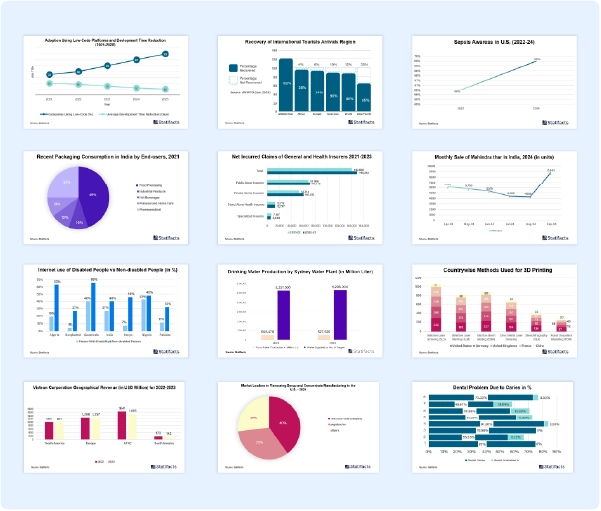The U.S. marine biotechnology market size is calculated at USD 2,519 million in 2024 and is predicted to reach around USD 5,240 million by 2034, expanding at a CAGR of 7.6% from 2024 to 2034.
U.S. Marine Biotechnology Market Key Takeaways
- By source, the algae segment accounted for the largest market share of 27% in 2024 and thus dominated the U.S. Marine biotechnology market.
- By application, the medicine segment accounted for the largest market share of 29% in 2024, hence dominating the market.
- By end-use, the medical and pharmaceutical segment registered the largest market share of 28% in 2024 and, thus, dominated the market.
Marine biotechnology is also known as ‘blue biotechnology,’ which refers to the use of marine diversity for various purposes in terms of form, structure, chemistry, and physiology. These aspects can be manipulated and used for desired output in different sectors. Marine biotechnology unlocks access to biological compounds and offers novel uses for it. By exploring marine materials, energy harnessing in substantial amounts is possible, which discloses entirely new possibilities for various markets to grow globally.
Marine biotechnology is witnessing a significant growth rate due to its extensive applications in marine biomedicine, including material technology, bioremediation, pharmaceutical discovery, genomics, bioinformatics, and molecular genetics. The energy sector is the biggest consumer of marine biotechnology. Thus, growing demand from the energy sector is the key driving factor for the U.S. marine biotechnology market. Microbial enhanced oil recovery-MEOR, for instance, a bio-based approach to accelerate the recovery efficiency of fossil oil reserves, may aid in extending the life span of mature oil reservoirs. Algal biomass balance is the key to achieving good energy. Cultivating microalgae for the generation of bioenergy is a major task that can be fulfilled by marine biotechnology, which is anticipated to expand the market further.
Another driving factor for the U.S. marine biotechnology market includes the growing demand for hormone products from the cosmetic industry, which will propel the market. Interesting sources of active ingredients are present in marine resources, gaining traction from the cosmetic sector. Marine microorganisms have specific properties, and the enzymes they produce are more helpful than those produced by traditional enzymes. Biotechnological tools are needed for the cultivation of these bioactive marine compounds. Many molecules with hydration properties are formed by marine organisms that are extensively used for skin elasticity.
Even though it offers numerous benefits, challenges like government regulations and the substantial amount required for the discovery process are creating hurdles to market growth. Technical barriers like the limited capacity to develop organisms in the laboratory and on a huge scale are limiting market expansion. Due to its comparatively low profile, marine biotechnology has not been funded well for decades, resulting in less research in the sector.
However, increased attention to sustainability goals and global collaboration among leading players reflects an increasing awareness of climatic impact. Research initiatives are extensively focused on responsibly harnessing marine resources, such as the utilization of algae for biomaterials and biofuels, which offers renewable alternatives to conventional resources. Thus, collaboration among research institutes and marketers is a major cornerstone of the marine biotechnology market’s expansion, facilitating access to the diverse ecosystem of the marine world and ensuring a broader understanding of sustainable practices, helping both local and global communities to expand further. Again, marine biotechnology is creating a significant impact on sectors like nutraceuticals, cosmetic and industrial enzymes. Also, technologies for bioremediation, which use marine microorganisms to clean up pollution, are gaining attention to address climatic issues.
Published by
Laxmi Narayan

